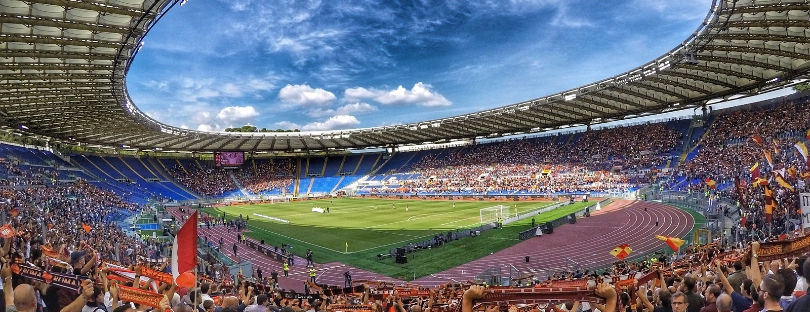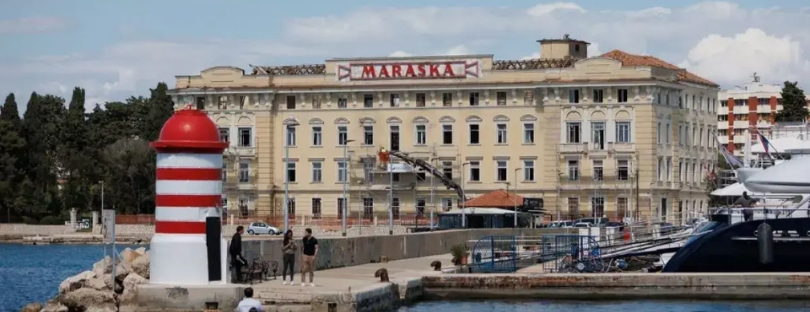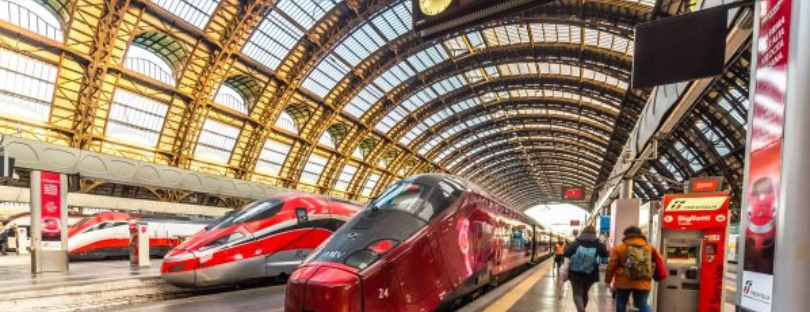
All Aboard! How to Travel Europe by Train on a Budget
With its extensive rail network and efficient train systems, Europe is one of the best places in the world for train travel. Trains connect major cities and remote villages across the continent, from Portugal’s Algarve region to Russia’s Far East. Rail travel offers a comfortable, affordable, sustainable, and scenic transportation option for exploring Europe.
In recent years, rail travel has seen significant growth across Europe. High-speed rail networks have expanded in countries like Spain, Italy, and France. Overnight sleeper train services have made a comeback. And many countries have invested in rail infrastructure and passenger cars. Europeans are traveling more frequently by train for leisure, business, and commuting.
Trains allow travelers to see the countryside, bypass congested highways, and avoid the hassles of flying. Rail passes provide unlimited travel options. Passengers can work, dine, socialize, and sleep onboard as the scenery passes by. Train travel is ideal for short cross-border trips or multi-week adventures. With an environmentally friendly and often cheaper alternative to driving and flying, it’s no wonder rail continues to grow in popularity across Europe.
Popular European Train Routes Travel Europe by Train
Traveling by train through Europe allows you to see the beautiful countryside and major cities of the continent. Some of the most popular European train routes include the following:
Paris to Amsterdam
This scenic journey takes around 3.5 hours to travel between the French capital of Paris and the capital of the Netherlands, Amsterdam. The train route passes through Brussels and Rotterdam along the way.
London to Edinburgh
The train between London Kings Cross station and Edinburgh Waverley station takes around 4.5 hours to travel the 655 km between England and Scotland. The route provides views of the English countryside before entering Scotland.
Barcelona to Madrid
The busy route between the Spanish cities of Barcelona and Madrid takes about 3 hours on the high-speed AVE train. Along the way, you’ll get views of Zaragoza and Guadalajara.
Rome to Venice
Travel from Italy’s capital city of Rome up to the floating city of Venice in just over 3.5 hours. The train hugs the Tyrrhenian Sea coast before cutting inland through Bologna and Padua.
Taking the train allows you to relax and enjoy the scenery between top European destinations. With an assortment of route and train options, rail travel makes getting around Europe efficient and memorable.
Booking Tickets
One of the best ways to book train tickets for travel through Europe is to use an online booking site like Trainline. Trainline allows you to easily compare and book tickets across a wide range of rail operators throughout Europe, all in one place.
You can also book tickets directly from the websites of individual rail operators. However, this requires visiting each rail company’s site separately to search for schedules and fares. Booking through Trainline saves time and effort.
Fares can vary between Trainline and direct from the operator. Trainline offers exclusive discounted fares on certain routes and deals that may not be available when booking directly. However, it’s a good idea to check both to find the best price.
The main benefits of using Trainline include:
– Search trains and fares across Europe in one place
– Easily compare timings and prices
– Book tickets on major high-speed and local/regional trains
– Access special offers and discounts
– Available in several languages
– Electronic ticket download to mobile device
So for convenience and saving money on train travel through Europe, an online booking site like Trainline is recommended over booking direct from each rail company.
Types of Trains
Rail travel in Europe offers a wide variety of train types to suit different travel needs and budgets.
High-Speed Trains
For quick connections between major cities, high-speed trains like the Eurostar, TGV, and ICE allow you to travel in style and comfort. The Eurostar links London with Paris, Brussels, and other continental destinations at speeds over 300 km/hr via the Channel Tunnel. France’s efficient TGV network connects Paris with cities like Lyon, Marseille, and Nice in just a few hours. Germany’s ICE trains connect Frankfurt, Munich, Hamburg, and Berlin with speeds up to 330 km/hr. These high-tech trains require seat reservations and have amenities like WiFi, spacious seats, and dining cars.
Overnight Trains
For overnight journeys, sleeper trains offer private cabins with beds so you can rest and arrive refreshed at your destination. Overnight trains connect many long-distance routes across Europe. Popular sleeper trains include the Caledonian Sleeper linking London and Scotland, the NightJet connecting Vienna, Munich, Italy, and Switzerland, and Thello trains between France and Italy. Sleeper cabins provide amenities like washrooms, bedding, and breakfast. Some even have showers and lounge cars.
Regional and Local Trains
For shorter trips and daily commutes, Europe has extensive networks of regional and local trains. These range from modern regional express trains to historic local lines. Regionals like Sweden’s X2000 allow quick hops between cities and towns. Locals, like Germany’s S-Bahn metro trains, are ideal for urban transport. These trains have seating classes ranging from basic to first-class. While slower than high-speed trains, they provide an affordable and authentic way to travel through Europe’s landscapes and communities.
Onboard Amenities
Traveling by train through Europe allows you to take in the scenery while enjoying amenities onboard. Many long-distance trains have dining cars serving food and drinks, so you can relax with a coffee or meal as the countryside rolls by.
Most trains offer WiFi access, so you can stay connected on your journey. The quality can vary, but it’s usually good enough for general browsing and emails. Some providers, like Eurostar, offer complimentary WiFi in business class.
Luggage storage areas are available on trains, allowing you to keep bags close at hand. There are designated overhead shelves and luggage racks near the doors and in between some seat pairs. Staff can advise where to safely store larger items.
Seating options range from open plans to compartments on European trains. First class offers the most spacious seats with extra legroom. Reclining seats in second class provide comfort for longer trips. Many regional trains have basic bench seating, while some high-speed trains, like the TGV, have airline-style seats with tray tables.
Station Facilities
Rail stations across Europe offer a variety of convenient facilities for travelers. As major transportation hubs, most large stations have been designed with passenger needs in mind.
Many stations feature lounges and waiting areas with ample, comfortable seating. Lounges may provide televisions, newspapers, magazines, charging stations, free wifi, vending machines, and clean restrooms for passengers to use while waiting. Larger stations often have multiple lounges and waiting areas located throughout the station.
Left luggage services allow travelers to safely store bags for a fee if they wish to explore a city after arriving at the station. Luggage can be left for several hours or even days and picked up at the traveler’s convenience. This saves the hassle of carrying bags around or finding somewhere to store them in a hotel early.
For navigating large, complex stations, most have maps posted throughout, and some provide volunteer navigation assistance. Travelers can look for information booths or volunteers wearing vests that say they provide guidance. Major European stations usually have signage in multiple languages.
Having access to quality facilities can greatly improve the rail travel experience. Lounges, baggage services, and navigation assistance allow passengers to comfortably await departures and make connections during long trips.
Schedule and Delays
The frequency of trains varies greatly depending on the route. On major intercity routes, you can expect high-speed and intercity trains every hour or couple of hours, especially during peak times. Regional and local trains tend to run every 1-2 hours on well-traveled routes. Always check the schedule when booking tickets.
Trains in Western European countries like France, Germany, and Spain have excellent punctuality records, with 80-90% of high-speed trains arriving within 15 minutes of schedule. Switzerland and Italy also have relatively reliable train networks. Delays can happen but are generally less common than flight delays.
If your train is delayed or canceled, stay calm and head to the information desk or speak with station staff. They can help you get on the next available train or find alternate routes to your destination. Make sure to communicate delays with any connecting trains, hotels, or travel plans. For significant delays, you may be entitled to compensation like meals, accommodation, or refunds under EU passenger rights, though the exact rules vary by country. With flexible tickets or rail passes, rebooking is usually free if trains are delayed.
Having some buffer time built into your itinerary, booking refundable tickets, and leveraging real-time train tracking apps can all help minimize hassle from potential delays or changes in rail plans when exploring Europe.
Rail Passes
One of the best ways to save money on train travel through Europe is with rail passes. These allow you to travel on a certain number of days over a defined period on trains across Europe. The two main types of rail passes are the Eurail pass and country-specific rail passes.
The Eurail pass allows travel through up to 31 different European countries. You can choose from a few different versions based on the number of travel days you want within a 1-month or 2-month period. For example, a 5-day, 1-month pass allows you to take 5 train trips over a 1-month period. The more travel days, the higher the cost, but it generally offers savings over buying individual point-to-point tickets.
Country-specific rail passes allow unlimited train travel within a particular country. These are offered for countries like Switzerland, Germany, Italy, France, and others. The timeline and number of travel days vary by country. For example, you could get a Swiss Pass with 3, 4, 8, or 15 travel days to use within a 1-month period.
The key advantage of rail passes is the cost savings compared to regular fares. You can take as many trips as your pass allows within the validity period without having to pay for each individual ticket. This offers great flexibility for train travelers looking to explore Europe by rail. Just be sure to compare costs against your planned itinerary to see if a pass makes sense.
Travel Tips
Riding the rails through Europe can be an amazing experience, but it helps to be prepared. Here are some tips for making the most of your rail journey:
– Arrive Early – Give yourself plenty of time to find your platform and board the train. Stations can be large and platforms are usually only announced 15-20 minutes prior to departure. Arriving 30-45 minutes early removes the stress of rushing.
– Manage Your Luggage – Most stations have luggage storage lockers if you want to travel light during your layovers. Onboard storage space is limited, so only keep essentials with you. Be ready to lift bags up onto overhead racks.
– Cafe Food vs Dining Car – Dining cars offer complete meals but can be pricey. The cafe car provides snacks and drinks that are lighter on your budget. Bringing your own food is another option.
– Download Entertainment – Free onboard WiFi can be spotty, so download shows, movies, music, books, and magazines to devices in advance. Bring headphones so you don’t disturb other passengers.
– Rail Passes – If traveling extensively, look into discounted rail passes. The Eurail Pass offers unlimited travel and reservations in over 30 countries. Regional passes like the BritRail Pass cover individual countries.
With smart preparation, your rail journey across Europe can create memories to cherish across the miles. Safe travels!
Conclusion
Rail travel is an adventurous, relaxing, and affordable way to explore Europe. This article has covered some of the most popular train routes across the continent, like scenic journeys through the Swiss Alps or along the Mediterranean coast. We’ve looked at the types of trains available, from high-speed to overnight sleeper trains, and the amenities offered onboard and at stations. Booking in advance, considering rail passes, and traveling light can help make the most of a European train trip.
The benefits of train travel versus other modes are clear: more legroom, freedom to move around, big windows for sightseeing, nearby stations that drop you right in city centers, and opportunities to meet locals. There is no need to deal with airport hassle or highway traffic. Trains have a nostalgic romance about them too, evoking the golden age of rail.
Ready to book your next European rail adventure? Use the promo code ‘HAPPYTRAVELS’ at checkout on Trainline’s website to receive 10% off your tickets. With an extensive inventory covering train operators across 36 countries, Trainline makes booking and managing train travel easy. Their mobile app lets you present tickets on your phone and provides real-time updates in case of delays or changes.
Hop aboard a train in Europe soon to enjoy an eco-friendly, relaxing journey with amazing scenery. The rails are calling!









